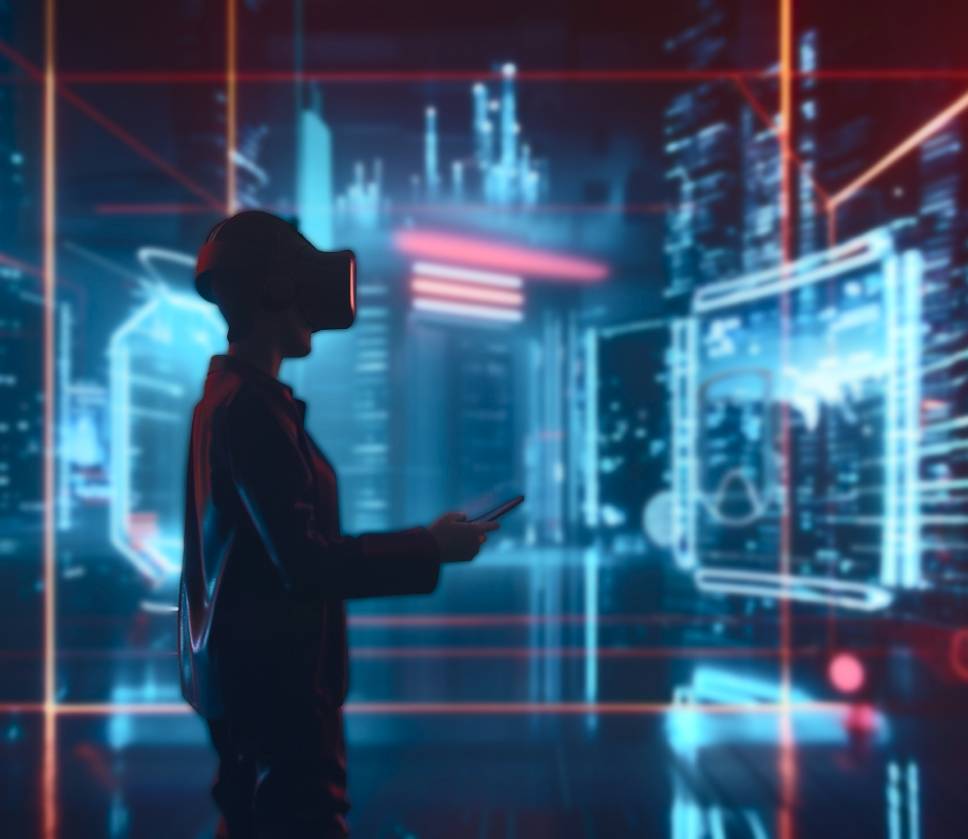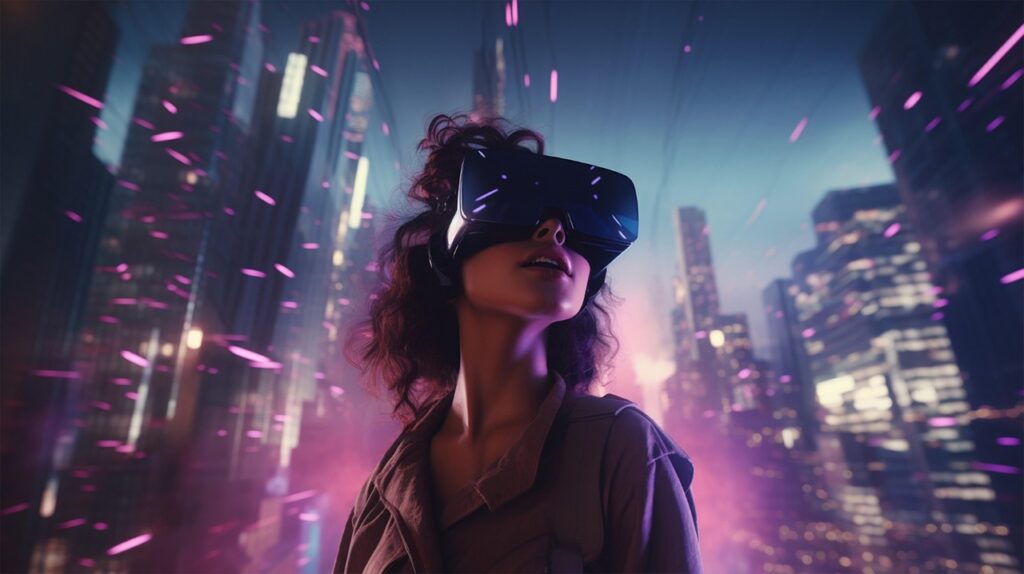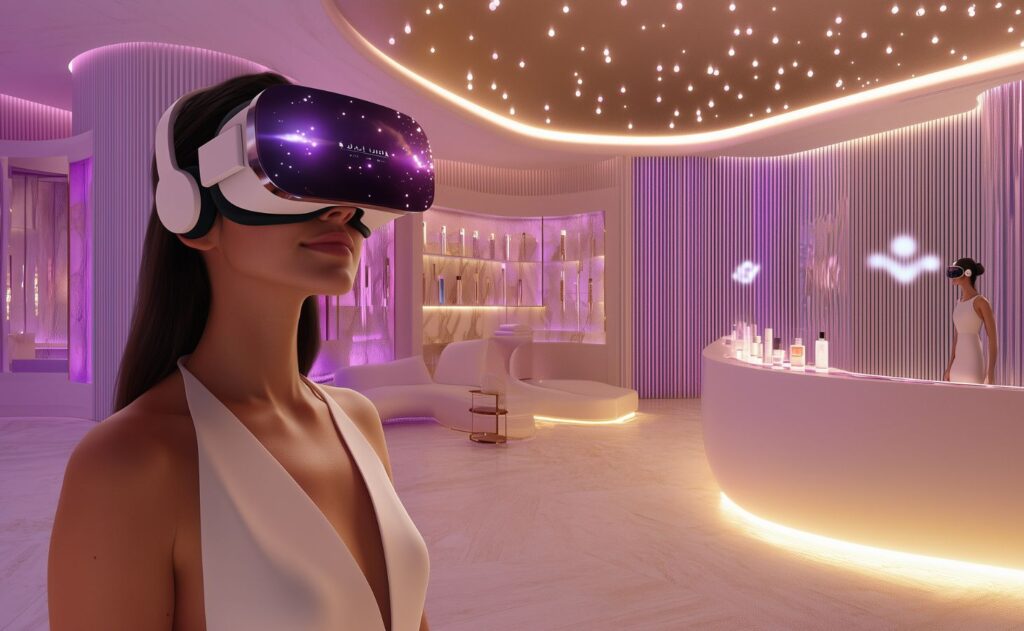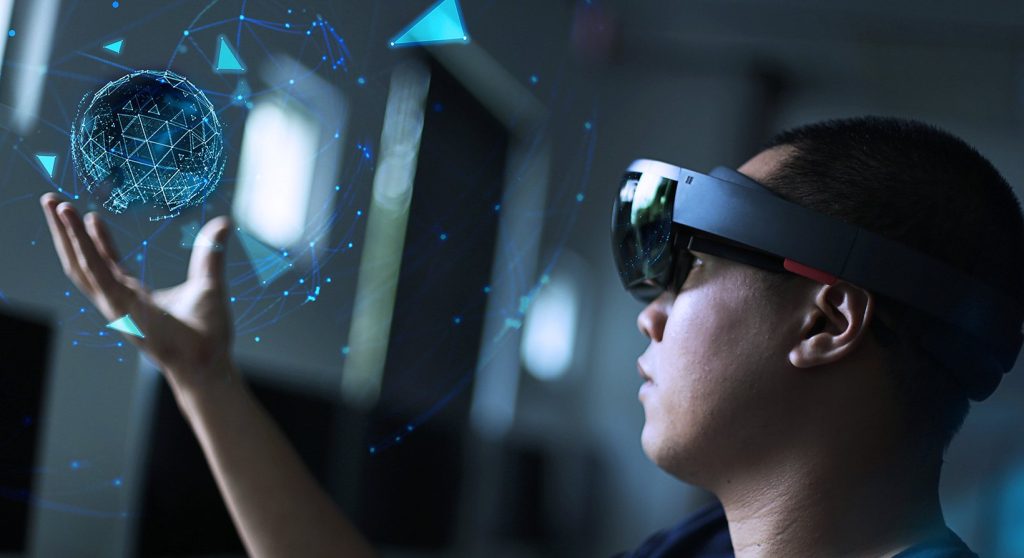We’re entering an exciting time for AR and VR, as these technologies are starting to change how we live, work, and play. With new advancements in devices, faster internet connections, and smarter AI, AR and VR trends are becoming more a part of our everyday lives. Whether it’s in healthcare, shopping, or entertainment, these tools are transforming industries and making experiences more immersive. Let’s take a closer look at the future of AR and VR, how the market is evolving, and what it means for businesses.
AR/VR Market Today
The XR market is expected to grow significantly, reaching an estimated $520 billion in the upcoming 10 years. VR trends are expanding across industries like gaming, healthcare, retail, and education, moving beyond their niche status. As we approach 2025, the focus isn’t just on new devices or tools and how these technologies reshape everyday experiences. Here are the top 5 VR trends to watch out for next year.
Top 5 VR Trends that you Should Know for 2025
1. AI-Powered Extended Reality
In this last period, artificial intelligence, which before seemed so distant, is becoming a familiar concept, a word, and an instrument, even in everyday objects. With these advances in AI, augmented and virtual reality can make giant strides. AI can significantly enhance XR by optimizing real-time data processing, enabling more sophisticated and realistic interactions, and allowing adaptive environments that respond intelligently to user behavior. Whether through advanced object recognition, natural language processing, or personalized content delivery, the fusion of AI and XR opens up new possibilities for creating immersive experiences that feel more intuitive, interactive, and human-like.

2. Rise of Digital Avatars
Digital avatars are now bridging the gap between the physical and digital worlds and transforming the customer service landscape, offering businesses a new way to engage with customers. These are computer-generated characters powered by AI that can hold real-time customer conversations. They understand and respond to inquiries just like a human agent but with the advantage of being available 24/7 and managing multiple conversations simultaneously. The shift towards digital interactions is evident, with 47% of customers now preferring chatbots for customer service. As customer expectations evolve, businesses adopt digital avatars that provide fast, efficient, personalized service.
3. 5G and Its Impact on The Future of AR and VR
With 5 G’s low latency and high-speed connections, AR and VR can offer real-time customer support, product demonstrations, and seamless collaboration on projects from afar. For instance, a virtual assistant in an online store can use 5G to perform a live product demonstration in real time, showcasing features like camera quality and battery life while interacting directly with users.

4. Web AR and Cross-Platform Application
Web AR lets users access augmented reality directly from their browsers, with no app required, making AR more accessible across platforms. For example, Ikea allows users to view products in their space using their phone’s camera through a browser, streamlining the experience and promoting broader AR adoption. Previously, businesses had to develop separate apps for iOS and Android, but with cross-platform development and Progressive Web Apps (PWAs), that’s no longer necessary. Cross-platform tools reduce development time and cost while maintaining a consistent user experience across devices.
5. Wearable AR/VR Devices
Wearable AR and VR devices, such as smart glasses and headsets, will rise in popularity by 2025. Two examples include the Meta Ray-Ban Stories and the Apple Vision Pro visor. Meta Ray-Ban Stories integrates AR functionality with social features, allowing users to take photos and videos, listen to music, and control the device via voice commands or touch gestures. These wearables are set to push AR into everyday use, blending technology seamlessly into daily routines.
Meta is developing Meta Orion, an advanced AR platform that enhances real-time interactions through intelligent wearables. Meta Orion seeks to deliver a seamless AR experience, enabling users to overlay digital information on the physical world with unprecedented precision. This technology could integrate with devices like the Ray-Ban Stories and future headsets, expanding the potential for navigation, real-time translations, gaming, and more, all directly in the user’s field of view.
Predictions and VR Trends Forecasts By Industry
Education and Training
AR & VR are transforming the way of learning and teaching, making the experience more engaging. In an immersive environment, students can simulate practical experiences that would normally be difficult or expensive to recreate in the real world. For example, immersive technologies can help museums and exhibitions to engage their audience and keep the attention and interest higher.
Retail and Ecommerce
VR is being used to bridge the gap between online and physical shopping, offering users increasingly “real” experiences. The idea is to allow consumers to view products in 3D or “try them out” virtually before they buy them. Customers can view the clothes in 360 degrees, in some cases they can try on through virtual avatars. This helps to reduce the risk of dissatisfaction and the number of returns.
Virtual Reality Trends for Healthcare
XR reality is used mostly for surgical simulations letting medical professionals to exercise in safe spaces before intervene on real people. Also, data visualization through VR can also improve diagnosis and planning of complex interventions. These technologies can be used for training and teach very important techniques in the medical field, like in this VR CPR training simulator developed for Red Cross.
Manufacturing and Engineering
AR and VR are key in product design and prototyping, offering realistic visualizations before physical models are created. This reduces costs and speeds up the development process. With XR reality the engineers can know how a product will look before producing it in real life, this makes way easier to correct mistakes before the real construction. Immersive technologies enable more accurate measurements and detailed visualizations, improving quality and reducing production times.
Entertainment and Gaming
The gaming industry is at the forefront of using VR and AR to deliver ever more immersive experiences. These technologies allow players to fully immerse themselves in virtual worlds, with increasingly realistic and personalized interactions. Gamification can help brands open up to people and engage them in their values and goals.
Predictions and VR/AR Forecasts By Industry
Looking ahead to 2025, the accessibility and usability of AR and VR technologies will be critical to their widespread adoption. As we see significant advancements in these technologies, ensuring inclusivity for people of all backgrounds and abilities must become a top priority. At YORD, the future of AR/VR will rely heavily on designing intuitive user interfaces and creating diverse content that accommodates different user needs.
The rapid development of wearable devices like the Apple Vision Pro and Meta presents an opportunity to make AR/VR technologies more user-friendly. Features such as voice commands, gesture controls, and customizable settings will cater to a broader audience, ensuring these tools are approachable to users of all ages and skill levels.
As AR and VR mature, focusing on accessibility and user-friendliness will unlock their full potential across various industries, such as education, healthcare, entertainment, and retail.
Prepare for the Future of Augmented REality
At YORD, we believe businesses can shape the future by adopting immersive technologies while prioritizing inclusivity. Partnering with us means getting expert guidance to implement AR, VR, and MR solutions that engage customers, train employees, and innovate products. We ensure these technologies are accessible to everyone. Whether you want to create immersive experiences, improve collaboration, or enhance training, we tailor solutions to your needs. Together, we can drive innovation and inclusivity in the digital world.
👋 get in touch
By clicking the “send” button, I agree to the collection and processing of my personal data as described in the Privacy Policy.




